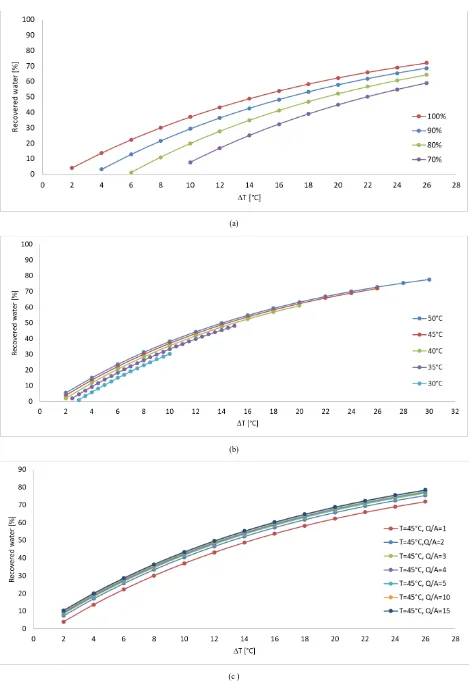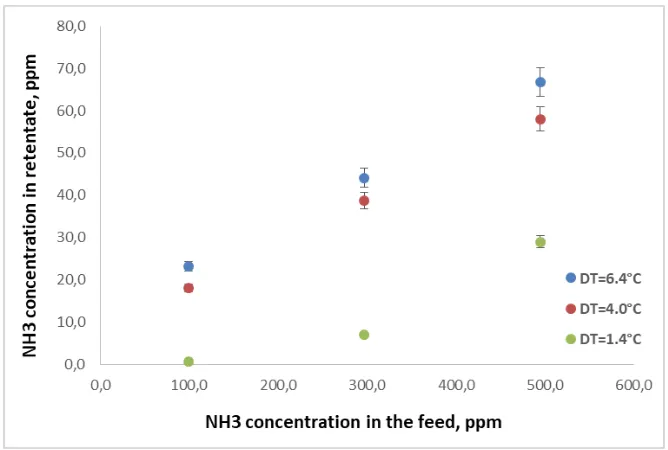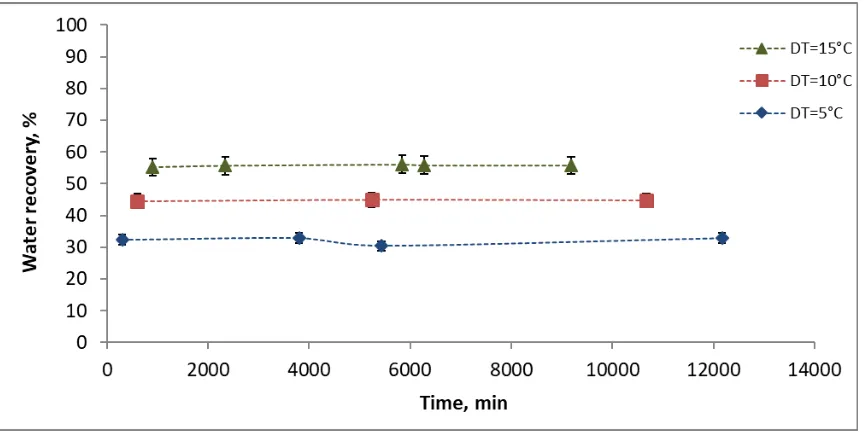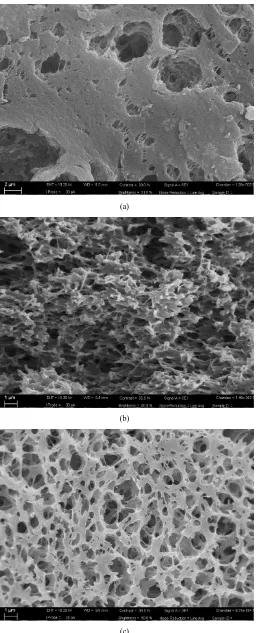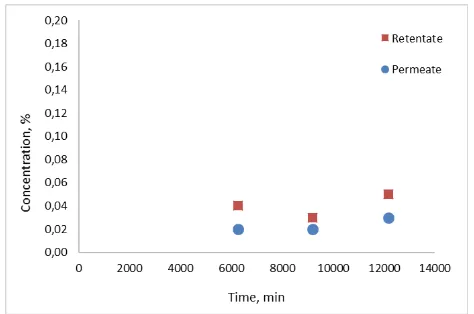Keywords
Highlights
Abstract
Graphical abstract
81
Research Paper
Received 2019-08-08 Revised 2019-10-18 Accepted 2019-10-20 Available online 2019-10-20
Membrane condenser Waste gaseous streams Particulate removal Water recovery
• Particles removal from waste gaseous stream • Membrane Condenser technology
• Membrane pore size and hydrophobicity are the fundamental parameters of the process
Membrane Condenser for Particulate Abatement from Waste-Gaseous Streams
1 National Research Council - Institute on Membrane Technology (ITM–CNR), Via Pietro Bucci cubo 17C, c/o University of Calabria, 87036, Rende CS, Italy
2 University of Calabria - Department of Environmental and Chemical Engineering, Via Pietro Bucci cubo 44A, 87036, Rende CS, Italy
3 State Key Laboratory of Materials-Oriented Chemical Engineering, College of Chemical Engineering, Nanjing Tech University, Nanjing 210009, China
Mirko Frappa
1, Adele Brunetti
1, Enrico Drioli
1, 2, Zhaoliang Cui
3, Jun Pan
3, Francesca Macedonio
1,*Article info
© 2020 MPRL. All rights reserved.
* Corresponding author at: Phone: +39 0984 492019; fax: +39 0984 402103 E-mail address: f.macedonio@itm.cnr.it (F. Macedonio)
DOI: 10.22079/JMSR.2019.112686.1282 1. Introduction
There is strong evidence that fine particulate matter (PM) air pollution
contributes to increased risk of disease and death [1-4]. The Global Burden of Disease 2010 collaboration estimated that the number of deaths attributable to ambient particulate matter air pollution and household air pollution from solid fuels were approximately 3.2 and 3.5 million in 2010, respectively [5]. Corbett et al. [6] estimated that shipping-related particulate matter (PM) emissions are responsible for approximately 60,000 cardiopulmonary and lung cancer deaths annually, with most deaths occurring near coastlines in Europe, East Asia, and South Asia. Even if larger fractions of the aerosols generated by anthropic activities derive from process industries and combustion units, major exposure risks for human beings are also related to those sources active in urban areas, such as domestic heating and diesel engines emissions. Therefore, air quality in the built environment continues to be a primary health concern as the majority (i.e., 54% in 2014) of the world's population currently lives in urban areas, and this is projected to rise to 66% by 2050 [7]. Traffic emissions
are the main source of air pollution in cities around the globe [8]. Road traffic
emits a variety of harmful pollutants in the form of particulate matter - PM10
(particulate matter ≤10 micron), PM2.5 (≤2.5 micron) and ultrafine particles
(UFP; <100 nm) - and gaseous pollutants such as the nitrogen oxides (NOx), carbon monoxide (CO) and in minor part sulphur dioxide (SO2). Very fine
inhalable particles can remain suspended in the atmosphere for a long time, travel long distances from the emitting sources and, once inhaled, they can reach the deepest regions of the lungs and even enter in the circulatory system. Therefore, the lower the particle size, the higher its toxicity.
Albeit this scenario, the traditional particle abatement devices are mainly designed and optimized to treat particles with sizes above or around 1 micron,
and they are far less effective towards the submicronic dimensions. Usually,
for process industry and combustion units, complex systems including trains
of consecutive abatements devices (water scrubber, fabric filters, cyclones,
venturi scrubbers, electrostatic precipitators) are employed. For diesel
engines, the typical retrofit system is Diesel Particulate Filtration coupled
Journal of Membrane Science & Research
journal homepage: www.msrjournal.com
Membrane Condenser (MC) is a novel membrane contactor operation recently investigated for the valorization of industrial waste gaseous streams. In particular, until now, it was applied for water recovery from flue gas, cooling tower plumes, etc. More recently, its effectiveness and flexibility in contaminants (such as, NH3, HF, SO2) removal and control from
waste gaseous streams was also proved. In the present work, the application of membrane condenser for water recovery as well as microparticles removal from gaseous streams are presented. Experimental tests showed that microparticles did not affect membrane condenser performance, neither in terms of water recovery nor in term of fouling. Moreover, the carried-out tests revealed also that the complete retention of particles can be achieved only through the proper choice of the membrane, with pore size lower than particles diameter.
with Exhaust Gas Recirculation [9-13]. These after treatment units allow high removal efficiency for nanometric particles and they are commonly adopted on cars, but the high pressure drops and the catalyst costs reduce their applicability for heavy duty diesel engines as those of trucks, trains or vessels
[Error! Bookmark not defined.]. Physic-chemical treatments, such as combustion or adsorption on activated coal filters [14] waste a lot of energy and result in secondary pollution. Bio-filters have various advantages (such as simplicity, cheap design, ideally suited to remove poorly soluble pollutants) but also various disadvantages (such as large floor space necessary, no possibility to control the process conditions, generation of odors from support materials).
In the present manuscript, for the first time, membrane assisted condenser (MCo) is proposed for particles removal from a gaseous stream. The efficacy of this innovative membrane operation for water recovery [15, 16] as well as its effectiveness and flexibility in contaminants (such as, NH3, HF, SO2)
removal and control [17, 18] from waste gaseous streams was already proved. In this work, the potentialities of MCo in the capture of water and particles from gaseous streams is described.
2. Membrane condenser: process principle
Membrane condenser is a novel membrane operation belonging to the class of membrane contactors. The defining phenomenon of MCo is relatively simple. A saturated gaseous stream (i.e., the feed) is brought into contact with one side (i.e., retentate or feed side) of a hydrophobic, microporous membrane (Figure 1). The hydrophobic nature of the membrane prevents the penetration of water droplets and contaminants into the pores, whilst promotes water vapor condensation exploiting the dropwise condensation phenomena. Therefore, liquid water and contaminants are recovered at the retentate side, whereas the other gases and the remaining amount of water vapor are collected at the permeate side of the membrane unit [15-19].
Fig. 1. Scheme of membrane condenser processError! Bookmark not defined..
The fraction of retained water depends on temperature, relative humidity and pressure at feed membrane side, and contact time between the saturated stream and the membrane.
The documented and expected benefits resulting from MCo application are as follows:
Compared to traditional condensers, there is no corrosion because the membrane and the membrane module can be fabricated from almost any chemically resistant materials. In particular, the membrane can be prepared from both polymeric and inorganic materials with hydrophobic properties [20, 21]. Examples are: polypropylene, poly-vinylidenefluoride, poly-tetrafluoroethylene, Hyflon AD
(2,2,4-trifluoro-5-tri-fluorometoxy-1,3-dioxole), ECTFE (Ethylene-Chlorotrifluoroethlyene copolymer), modified hydrophobic ceramic membranes (e.g., by coating hydrophobic polymethylsilsesquioxane aerogels on alumina membrane supports, by applying fluoroalkylsilanes hydrophobic agent on alumina hollow fibers), mixed matrix (e.g., fillers of graphene, zeolite, carbon nanotubes, etc.).
Operating pressure is generally on the order of few hundred kPa. Lower operating pressures translate to lower equipment costs and increased process safety (in fact the opposite with respect to cryogenic separation which is an energetic and expensive process, not economically convenient).
Compared to adsorption by a liquid or solid desiccant, there are no
desiccant losses, cost and regeneration of adsorbent. Moreover, a
desiccant system has the disadvantage of the low quality of the recovered water.
With respect to dense membrane, energy consumption is lower. In fact, when dense membranes are used for gas dehydration, high pressure is necessary to promote the permeation of the water vapor through the membrane and low pressure is required on the permeate side specifically for hollow fiber membranes to avoid the condensation inside the fibers. This means vacuum pumps, high energy consumption and high costs. Vice-versa, the main advantage of dense membrane is the high-quality of the obtained water due to the preferential transport of water vapour, with respect to gases, through the membrane via sorption-diffusion mechanism.
Membrane assisted condensation (which utilizes microporous
hydrophobic membranes) has not to be confused with transport
membrane condenser (TMC). In the latter, porous hydrophilic
membranes are used for water and heat recovery from gaseous streams exploiting the capillary condensation principle. The main TMC advantage is the preferential water permeation, owed to the strong affinity of the hydrophilic materials to water which limits the permeation of other species. On the contrary, TMC main drawbacks are: the high temperature gradient across the membrane; the increase of the temperature at the membrane surface and within the membrane pores; the dependence of membrane selectivity by membrane pore size
[23].
The most relevant aspects of the three main different membrane technologies for water recovery from gaseous streams, with their specific advantages and drawbacks, are summarized in Table 1.
Membrane condenser is a quite new technology, proposed and developed by Drioli and co-workers, initially in the framework of FP7 CAPWA project (Capture of evaporated water with novel membranes) [27]. Afterwards, it was further studied and scaled up in the EU Horizon 2020 project MATChING (Materials & Technologies for Performance Improvement of Cooling Systems performance in Power Plants) [28]. In both projects, membrane condenser was utilized for the recovery of evaporated water from humidified waste gaseous streams. In particular, membrane condenser was tested in CAPWA, at lab-scale, for water recovery from flue gas (i.e., a waste gaseous stream at high temperature containing SOx, NOx and particles) whereas in MATChING
project it was developed for water recovery from plume of cooling tower (i.e., the stream of saturated exhaust air leaving the cooling tower). The research activities performed at lab-scale [15, 18] proved that the main parameters influencing the process are the temperature of the feed (Tfeed), the relative
humidity of the feed (RHfeed), the temperature difference between the feed and
the membrane module (ΔT), the ratio (Q/A) between the feed flow rate (Q) and the membrane area (A). An example can be found in Figure 2 showing that higher is the ΔT, larger will be the amount of water that can be recovered. Moreover, at the same ΔT, the percentage of recovered water growths with the increasing of RHfeed (Figure 2a) and/or Tfeed (Figure 2b) and/or Q/A
(Figure 2c).
For what concerns the quality of the recovered liquid water, it strongly depends on the composition of the gaseous stream fed to the membrane condenser as well as on ΔT, RHfeed and Q/A. Research activities performed
considering the presence of contaminants as NH3, HF, SO2 revealed that their
concentration is a decreasing function of Q/A [17]. Furthermore, in the case of contaminants whose solubility increases with the decrease of temperature
[17], contaminants concentration increases with the growing of ΔT, at constant Tfeed, due to the reduction of Tmodule and consequent increasing of
more pressing.
Table 1
Comparison between membrane technologies for water recovery [23].
Process Gas separation with dense membrane Membrane condenser Transport membrane condenser
Concept
Membrane morphology
Dense Porous hydrophobic Porous hydrophilic
Parameter determining process performance
High pressure difference between the membrane sides for promoting water vapor permeation.
-Cooling of the feed for increasing the amount of liquid water to be recovered, depending on the temperature and relative humidity of the feed gaseous stream.
-Low pressure difference (0.01 – 0.1 bar) between the membrane sides for promoting the gases permeation.
-High temperature difference between the membrane sides for promoting water vapor condensation within membrane pores.
-Low pressure difference (around 0.3 bar [22]) between the membrane sides for promoting the permeation of condensed species.
Transport mode Solution diffusion mechanism Knudsen-molecular diffusion transition Capillary condensation
Water collection side
Permeate Retentate Permeate
Permeating species
Mainly water vapor; a small fraction of other gaseous feed species
Permanent gases, a small fraction of water vapor Mainly water vapor
Retained species Low permeable species Condensed water and condensable gaseous species (whose amount strongly depend on operating conditions)
Non-condensable feed components, a small fraction of water vapor
Advantages High purity of the recovered water ((H2O/N2) and H2O permeability up to 105 barrer [24, 25].
-Possibility to control the liquid water vapor composition by opportunely tuning the operating conditions.
-Possibility to recover condensable components.
-Low energy consumption
-Preferential water permeation, owed to the strong affinity of the hydrophilic materials to the water, which limits the permeation of the other species
-Heat recovery
Drawbacks High energy consumption (because the evaporated water through the cooling tower and stack leaves at near atmospheric pressure, requiring additional vacuum to apply the necessary driving force for separation).
- Quality of liquid water eventually effected by the presence of contaminants.
- Limited process performance (in terms of recovered water) in the case of gaseous streams at low temperature and relative humidity.
-High temperature gradient across the membrane.
-Increase of the temperature at the membrane surface and within the membrane pores.
-Membrane pore size influences membrane selectivity [26].
- Heat and water flux must be carefully balanced to maximize the transport membrane condenser performance.
Until now, demo tests at pilot scale of membrane condenser technology have not yet been performed. Moreover, none of the research activities conducted so far had considered the presence of particles in the feed. In the present work, the capability of membrane condenser in reducing particles emission has been tested.
3. Material and Methods
3.1. Membrane condenser experimental apparatus
Membrane condenser tests were performed by using the experimental set up schematized in Figure 4.
The gaseous stream, at a certain temperature and relative humidity, is fed to the membrane condenser module whose temperature can be equal or below that of the feed. The membrane module is placed inside a thermostatic chamber. The latter allows to maintain constant the temperature of the module and to realize the ΔT between the feed and the module. The hydrophobic membranes retain the liquid water on the retentate side whereas the gaseous components (including the amount of water remained in the vapor phase) pass through the membrane pores and are recovered on the permeate side. The feed enters the module from above, shakes the fibers and prevents the stagnation of liquid and particles on the membrane surface.
For analyzing the performance of membrane condenser when particles are contained in the feed, microparticles based on polystyrene monodisperse with nominal diameter of 0.5 micron (Sigma-Aldrich) were dispersed in a saturated air stream. Table 2 reports the characteristics of the utilized particles whereas Table 3 summarizes the operating conditions used in the experiments.
Table 2
Characteristics of the microparticles utilized in the experiments.
Particle composition polystyrene
Particle specific gravity, g/cm3 1.05
Nominal particle diameter, micron 0.5
Standard deviation, micron 0.013
(a)
(b)
(c )
Fig. 3. NH3 concentration in the recovered liquid water at various NH3 concentration in the feed. Tplume ≈30°C, Q/A= 2.7, RHplume≈105%, 5.64°C<ΔT<6.40°C (from [18]).
Fig. 4. Scheme of the experimental set up.
Table 3
Operating conditions utilized in the experiments.
Hyflon AD/ PVDF PP
Relative humidity, % 103.8±0.6 103.8±0.6
Feed temperature, °C 45.1±0.1 45.1±0.1
Feed flow rate/membrane area, m h-1 1.3 1.3
Particlesconcentration in the feed, microg m-3 30 30
Two different membranes were utilized (Table 4): (i) lab made Hyflon AD/polyvinylidene fluoride (PVDF) composite membranes, (ii) commercial polypropylene (3M™ Capillary Membrane MF-PP Series, Type S6/2) membranes.
The lab made Hyflon/PVDF membranes were prepared by thermally induced phase separation (TIPS) and post-treated by glycerol solution to protect the pore structure. To remove the protective glycerol and poly(vinyl pyrroli-done), the PVDF membranes were immersed in ethanol for 1 h, and then in sodium hypochlorite solution with a concentration of 8 g/L for 3 h before coating. The treated membranes were named as original membranes. Treated membranes were coated with Hyflon AD and labeled as Hyflon AD/PVDF composite membranes. The details of the composite membrane preparation technique can be found in previous works [29-31]. Hyflon AD solutions were prepared by mixing Hyflon AD powder (HyflonAD40H) and Novec HFE-7100. Original PVDF hollow fiber membranes were blocked at both ends and dipped into the Hyflon AD solutions for different period of time. Finally, the coated membranes were taken out and heated at desired temperatures for several hours.
The membranes prepared via TIPS were chosen in this work because, among the different phase-inversion methods, TIPS allows producing membranes with a very narrow pore size distribution [32].
Table 4
Membrane condenser modules characteristics and membrane properties.
Membrane material PVDF/Hyflon AD PP
Pore size, μm 0.15±0.018 0.2 *
Bubble point, μm 0.59±0.06 n.a.
Fiber length, mm 90 160
Fiber outer diameter, mm 1.3 2.7 *
Porosity, % ≈ 70 *
Number of fibers 9 19
Total membrane surface area, cm2 33.1 258
Time of experimentation, h 72.5 203
* According to manufacturer data sheet.
Membrane condenser was tested continuously for around 72.5 hours with composite membranes (in order to check the capability of the membranes to retain the particles) and 203 hours with commercial membranes (where the larger membrane module allows analyzing both particles retention and
eventual membrane fouling issues).
The experimental results are reported in terms of amount and composition of the recovered liquid water. Water recovery is defined as the mass of liquid water retained in the retentate side with respect to the total water contained as vapor in the gaseous feed stream (Eq.1):
% , 100 stream feed the in contained water Total
side retentate the in retained water Liquid recovery
Water (1)
For determination of particles, samples were collected and dried by a thermo-balance (OHAUS MB 45) at a temperature of 105 °C until a constant weight was achieved.
During the longer experimentation with commercial PP membranes, the temperature difference ΔT between the feed and the membrane module was changed from 5 to 10 to 15°C. The test cycle was repeated several times to test any system performance failures and to check the repeatability of the results. The morphology of the utilized PP membranes as well as the eventual deposition of particles on membrane surface and inside the membrane pores were observed by scanning electron microscope (SEM - Zeiss EVO, MA100, Assing, Italy). Cross-section, top and bottom layer images were acquired. In order to investigate any performance deterioration and/or fouling with time, pieces of capillary membranes were cut during the 203h of experimentation and characterized by SEM analysis.
4. Results and discussion
The first set of experiments were done with the lab made Hyflon AD/PVDF membranes. They proved that 46% of water can be recovered from the feed when the MCo plant is operated with a temperature difference ΔT equal to 10°C. Analysis of the collected permeate at different time confirmed the absence of particles.
Then, membrane condenser tests were performed utilizing the module containing PP membranes. The largest membrane surface available in the module with PP membranes allowed collecting more water in shorter time and, therefore, faster evaluating eventual system performance failures and/or fouling problems. The commercial PP membranes were chosen (as done for the Hyflon AD/PVDF ones) with nominal pore size lower than particle size (Table 4) to prevent particles from passing through membrane pores. Moreover, as earlier described, the second set of experimental measurements were performed at various ΔT. Figure 5 shows the recovered water at around 45°C for ΔT ranging from 5 to 15°C. It can be observed that the amount of recovered water increases at growing ΔT. Moreover, for the same ΔT, water recovery remained constant with time indicating no process performance deterioration with time due to fouling issues on the membrane surface and inside the membrane pores. SEM micrographs of the utilized capillary membranes (Figure 6)confirmed the absence of particles deposition on the membrane surface and inside the membrane pores, at least during the performed experimentation.
(a)
(b)
(c)
Fig. 6. SEM images of the utilized PP membrane: (a) top, (b) cross section, (c) bottom.
Another confirmation that the presence of polystyrene particles in the feed did not cause decline in the process performance was obtained by comparing the amount of recovered water in the two different situations
reported in Figure 7. As it can be observed, no variation in the water recovery was measured in the tests with particles contained in the feed with respect to the tests performed with gaseous streams without particles (Figure 7).
For what concerns the quality of the recovered liquid water, visual observation of the retentate samples clearly revealed the presence of the white polystyrene particles in the collected liquid water (Figure 8). SEM pictures (Figure 9) of the utilized commercial membranes revealed the presence of pores (on the membrane surface and in the cross sections) larger than polystyrene particles diameter (i.e., 0.5 m), despite their technical sheet indicate 0.20 m as membrane nominal pore size. The presence of pores bigger than 0.20 m, in the commercial Accurel PP S6/2 membranes, was measured also by Gryta [33] (where pores with dimensions exceeding 10 m are reported). Therefore, during the tests, the permeate gaseous stream was also collected and condensed in order to determine if, due to the large dimension of the membrane pore size, polystyrene particles passed through the membrane pores, too.
Analytical measurements of the concentration of polystyrene in the collected samples confirmed that a fraction of particles passed through the membrane pores (Figure 10). As an example, polystyrene concentration in the samples collected at the end of the experimentation was equal to 514 ppm in the retentate and about half (255 ppm) in the permeate.
5. Conclusions
Waste gases can contain various pollutants such as particulate matter, acid gases (like SOx, NOx, HCl, etc.), pathogens (such as legionella [34]), etc., together with large quantities of water vapor. Also, in many industrial production processes, evaporated water is either produced and/or liberated in the process and escape as “waste” water to the atmosphere. Contaminants emitted in the atmosphere can cause severe health problem whereas vapor emissions can create environmental impacts in terms of greenhouse effects. The processes used for eliminating the pollutants from waste gases are either physicochemical (such as scrubbing, adsorption, condensation, and oxidation) or biological. Physic-chemical treatment of polluted industrial waste gases, such as combustion or adsorption on activated coal filters which are used conventionally tend to waste a lot of energy and result in secondary pollution. Despite the advantages of bio-filters (simplicity, cheap design, ideally suited to remove poorly soluble pollutants, e.g., hydrocarbons), various are the disadvantages (such as large floor space necessary, no possibility to control the process conditions, e.g., pH; and generation of odors from support materials). For what concerns water vapor removal and recovery from waste gases, little development has taken place in capturing the evaporated waste water. The technologies until now proposed for the capture of evaporated water from gaseous streams are: cooling with condensation, cryogenic separation, liquid and solid sorption, dense membranes or porous hydrophilic membranes. Each of them with its own advantages and disadvantages:
• Traditional condensers represent the easiest process even if corrosion phenomena due to the presence of acid pollutant in the waste gases stream are their main limitation;
• Adsorption of water by a liquid or solid desiccant is another valid alternative despite desiccant losses, cost and regeneration of adsorbent, and low quality of water are the main drawbacks;
• Cryogenic separation is an energetic and expensive process not economically convenient;
• High energy consumption due to the high-pressure requirements is associated with the utilization of dense membrane for the recovery of water vapor from the gaseous streams.
In the present work, the potentialities of membrane assisted condensation for water recovery as well as microparticles removal from gaseous streams were illustrated. It was described that the recovery of water depends on the temperature (Tfeed) and relative humidity (RHfeed) of the fed gaseous stream,
on the temperature difference between the feed and the membrane module (ΔT), and on the ratio between the feed flow rate and the membrane area (Q/A). Experimental tests performed on gaseous streams containing microparticles showed that they do not affect membrane condenser performance, neither in terms of water recovery nor in term of fouling, at least for the carried-out experimentation. The achieved results have to be ascribed to:
- The proper membrane module design (with the feed that enters the module from above, shakes the fibers and prevents the stagnation of liquid and particles on the membrane surface);
membrane process causes that the eventual deposition of aggregates on the membrane surface is very little compact and practically irrelevant on the process performance.
However, the performed tests revealed also the importance of the correct choice of the membrane, with well controlled properties, because the final performance of the process (in terms of complete retention of particles) is a direct consequence of the structural and physicochemical parameters of the utilized membrane. This aspect, fundamental for any membrane process, becomes imperative for membrane contactor devices whose performance is intrinsically affected by the structure of the film in terms of hydrophobicity, porosity, mean pore size, bubble point, pore distribution and geometry. Thus,
the successful outcome of the process is reasonably expected to be depending upon the capability of the membrane to prevent particles intrusion into the pores avoiding, at the same time, fouling problems.
In conclusion, the experimental evidence illustrated in the present work proves the potentialities of membrane condenser for recovering water and, at the same time, through a proper choice of the membrane morphology, reducing contaminants emission in the atmosphere. These are fundamental aspects to consider in highly industrialized realities where the problems connected to water shortage and air pollution (inducing health problems and climate concerns) are becoming more and more pressing.
Fig. 7. Water recovery vs ΔT for two different feed: the first one with polystyrene particles contained in the gaseous stream, the second one without polystyrene particles contained in the feed.
Fig. 8. a) Feed solution with microparticles based on polystyrene (nominal diameter 0.5 micron) before to be dispersed in the feed gaseous stream. b) Samples of retentate and permeate collected after 61h of operation.
Fig. 9. SEM micrograph related to the top surface of the utilized PP membranes with measurement of some pores.
References
[1] C.A. Pope III, M. Cropper, J. Coggins, A. Cohen, Health benefits of air pollution abatement policy: role of the shape of the concentration–response function, J. Air Waste Manage. Assoc. 65 (2015) 516-522.
[2] U.S. Environmental Protection Agency. 2009. Integrated Science Assessment for Particulate Matter (Final Report). EPA/600/R-08/139F. Washington, DC: U.S. Environmental Protection Agency.
[3] C.A. Pope III, D.W. Dockery, Critical review—Health effects of fine particulate air pollution: Lines that connect, J. Air Waste Manage. Assoc. 56 (2006) 709–742. [4] R.D. Brook, S. Rajagopalan, C.A. Pope III, J.R. Brook, A. Bhatnagar, A.V.
Diez-Rouz, F. Holguin, Y. Hong, R.V. Luepker, M.A. Mittleman, et al., Particulate matter air pollution and cardiovascular disease: An update to the scientific statement from the American Heart Association. Circulation 121 (2010) 2331–2378. [5] S.S. Lim, T. Vos, A.D. Flaxman, G. Danaei, K. Shibuya, H. Adair-Rohani, M.
Amann, H.R. Anderson, K.G. Andrews, M. Aryee, et al., 2012, A comparative risk assessment of burden of disease and injury attributable to 67 risk factors and risk factor clusters in 21 regions, 1990–2010: A systematic analysis for the Global Burden of Disease Study, Lancet 380 (2010) 2224–2260.
[6] J.J. Corbett, J.J. Winebrake, E.H. Green, P. Kasibhatla, V. Eyring, A. Lauer, Mortality from ship emissions: a global assessment, Environ. Sci. Technol. 41 (2007) 8512–8518.
[7] United Nations, 2014. World urbanization prospects 2014. Demogr. Res. 32. [8] P. Kumar, M. de Fatima Andrade, R.Y. Ynoue, A. Fornaro, E.D. de Freitas, J.
Martins, L.D. Martins, T. Albuquerque, Y. Zhang, L. Morawska, New directions: from biofuels to wood stoves: the modern and ancient air quality challenges in the megacity of Sau Paulo. Atmos. Environ. 140 (2016) 364-369.
[9] C. Carotenuto, F. Di Natale, A. Lancia, Wet electrostatic scrubbers for the abatement of submicronic particulate, Chem. Eng. J. 165 (2010) 35-45.
[10] G.W. Penney, Electrified liquid spray dust-precipitators, US Patent 2,357,354,1944. [11] K.R. Parker, Why an electrostatic precipitator?. In Applied Electrostatic
Precipitation (pp. 1-10) (1997). Springer, Dordrecht.
[12] M. Ali, C. Yan, Z. Sun, H. Gu, K. Mehboob, Dust particle removal efficiency of a venturi scrubber, Annal. Nucl. Energ. 54 (2013) 178-183.
[13] A. Jaworek, A. Krupa, A.T. Sobczyk, A. Marchewicz, M. Szudyga, T. Antes, W. Balachandran, F. Di Natale, C. Carotenuto, Submicron particles removal by charged sprays. Fundamentals, J. Electrost. 71 (2013) 345-350.
[14] A. Karademir, M. Bakoglu, F. Taspinar, S. Ayberk, Removal of PCDD/Fs from flue gas by a fixed-bed activated carbon filter in a hazardous waste incinerator, Environ. Sci. Technol. 38 (2004) 1201-1207.
[15] F. Macedonio, A. Brunetti, G. Barbieri, E. Drioli, Membrane Condenser as a new technology for water recovery from humidified “waste” gaseous streams, Ind. Eng. Chem. Res. 52 (2013) 1160−1167.
[16] F. Macedonio, A. Brunetti, G. Barbieri, E. Drioli, Membrane condenser configurations for water recovery from waste gases, Sep. Purif. Technol. 181 (2017) 60-68.
[17] F. Macedonio, M. Cersosimo, A. Brunetti, G. Barbieri, E. Drioli, Water recovery from humidified waste gas streams: quality control using membrane condenser technology, Chem. Eng. Proc. Proc. Intens. 86 (2014) 196-203.
[18] F. Macedonio, M. Frappa, A. Brunetti, G. Barbieri, E. Drioli, Recovery of water and contaminants from cooling tower plume, Environ. Eng. Res. 25 (2020) 222-229. [19] A. Brunetti, S. Santoro, F. Macedonio, A. Figoli, E. Drioli, G. Barbieri, Waste
gaseous streams: from environmental issue to source of water by using membrane condensers, CLEAN–Soil Air Water 42 (2014) 1145-1153.
[20] F. Macedonio, A. Criscuoli, A. Brunetti, E. Drioli, Membrane condenser and membrane dryers, chapter 3.12 in Comprehensive Membrane Science and Engineering, 2nd ed., Vol. 3. Edited by: E. Drioli, L. Giorno, E. Fontananova, Oxford, Elsevier. 2017, pp. 318-330.
[21] E. Drioli, S. Santoro, S. Simone, G. Barbieri, A. Brunetti, F. Macedonio, A. Figoli, ECTFE membrane preparation for recovery of humidified gas streams using membrane condenser, React. Funct. Polym. 79(2014) 1-7.
[22] J. F. Kim, A. Park, S.J. Kim, P. Lee, Y. Cho, H. Park, S. Nam, Y. Park, Harnessing clean water from power plant emissions using membrane condenser technology, ACS Sust. Chem. Eng. 6 (2018) 6425-6433.
[23] A. Brunetti, F. Macedonio, G. Barbieri, E. Drioli, Membrane condenser as emerging technology for water recovery and gas pre-treatment: current status and perspectives, BMC Chem. Eng. 1 (2019) 19.
[24] S. Metz, W. Van de Ven, J. Potreck, M. Mulder, M. Wessling, Transport of water vapor and inert gas mixtures through highly selective and highly permeable polymer membranes, J. Membr. Sci. 251 (2005) 29−41.
[25] L. Vane, V. Namboodiri, G. Lin, M. Abar, F. Alvarez, Preparation of water-selective polybutadiene membranes and their use in drying alcohols by pervaporation and vapor permeation technologies. ACS Sust. Chem. Eng. 4 (2016) 4442−4450.
[26] D. Wang, A. Bao, W. Kunc, W. Liss, Coal power plant flue gas waste heat and water recovery, Appl. Energy 91 (2012) 341−348
[27] Final Report Summary - CAPWA (Capture of evaporated water with novel membranes) [Internet]. Last updated on: 25 July 2014 [cited 17 October 2019]. Available at: https://cordis.europa.eu/result/rcn/146177_en.html
[28] Materials technologies for Performance Improvement of Cooling Systems in Power Plant (acronym MATChING) [Internet]. [cited 17 October 2019]. Available at:
http://www.matching-project.eu
[29] D. Tong, X. Wang, M. Ali, C. Q. Lan, Y. Wang, E. Drioli, Z. Wang, Z. Cui, Preparation of Hyflon AD60/PVDF composite hollow fiber membranes for vacuum membrane distillation, Sep. Purif. Technol. 157 (2016) 1-8.
[30] Y. Zhang, X. Wang, Z. Cui, E. Drioli, Z. Wang, S. Zhao, Enhancing wetting resistance of poly (vinylidene fluoride) membranes for vacuum membrane distillation, Desalination 415 (2017) 58-66.
[31] Z. Cui, Y. Zhang, X. Li, X. Wang, E. Drioli, Z. Wang, S. Zhao, Optimization of novel composite membranes for water and mineral recovery by vacuum membrane distillation, Desalination 440 (2018) 39-47.
[32] Z. Cui, E. Drioli, Y.M. Lee, Recent progress in fluoropolymers for membranes, Prog. Polym. Sci. 39 (2014) 164–198.
[33] M. Gryta, Capillary Polypropylene Membranes for Membrane Distillation, Fibers 7 (2019) 1.
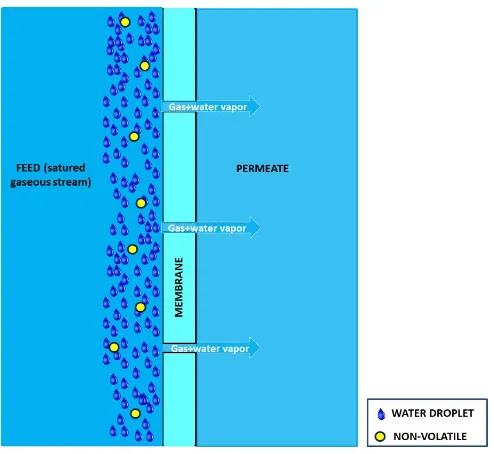
![Table 1 Comparison between membrane technologies for water recovery [23].](https://thumb-us.123doks.com/thumbv2/123dok_us/8423831.1695197/3.595.44.558.94.508/table-comparison-membrane-technologies-water-recovery.webp)
